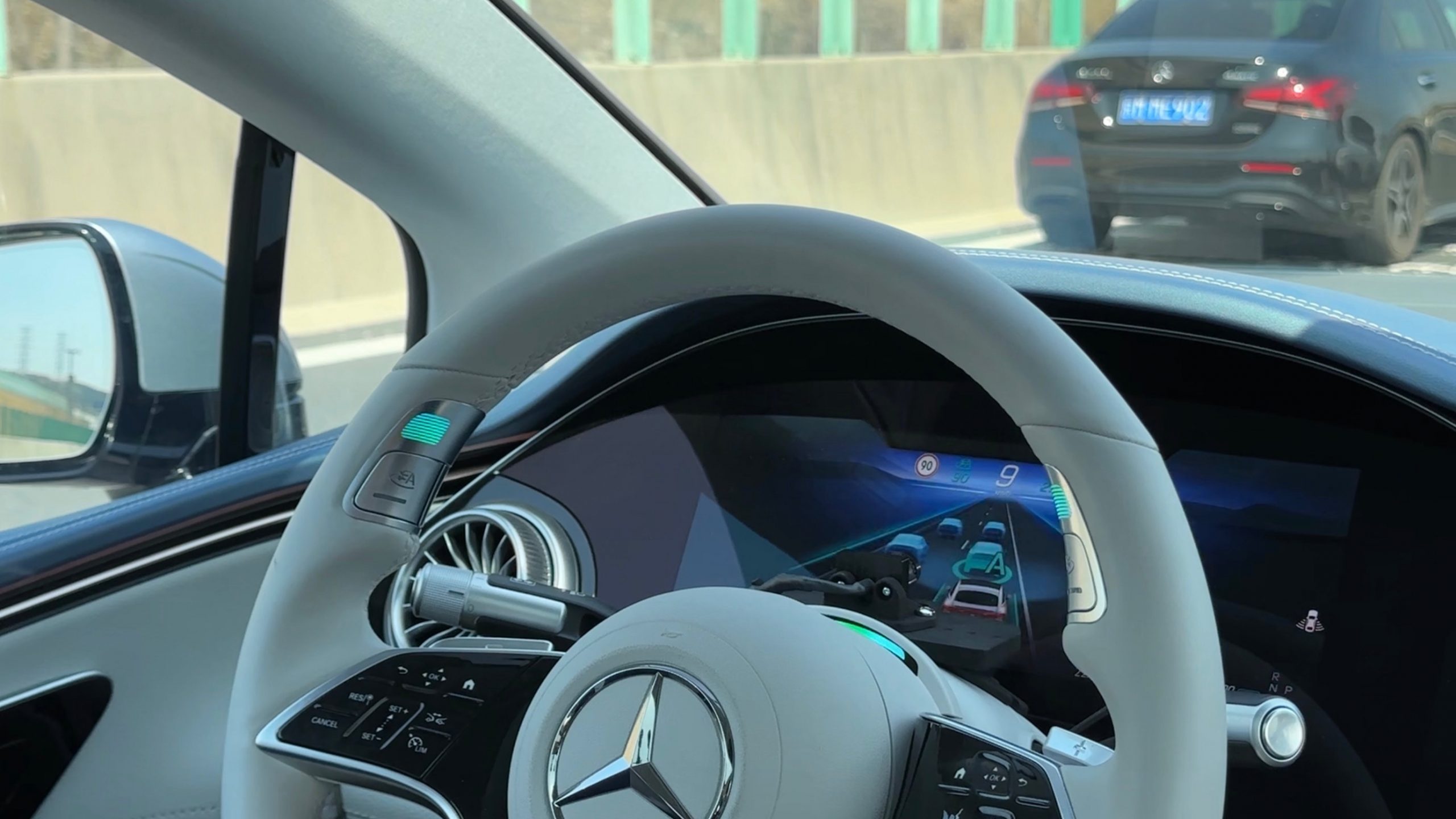On May 6, 2022, Mercedes-Benz officially announced the details of the S-Class and EQS models featuring L3 autonomous driving capabilities with the optional DRIVE PILOT at its Stuttgart headquarters in Germany. With this, Mercedes-Benz became the first automaker in the world to receive conditional autonomous driving certification with international validity. Moreover, DRIVE PILOT can achieve autonomous driving under specific conditions on certain German highways.
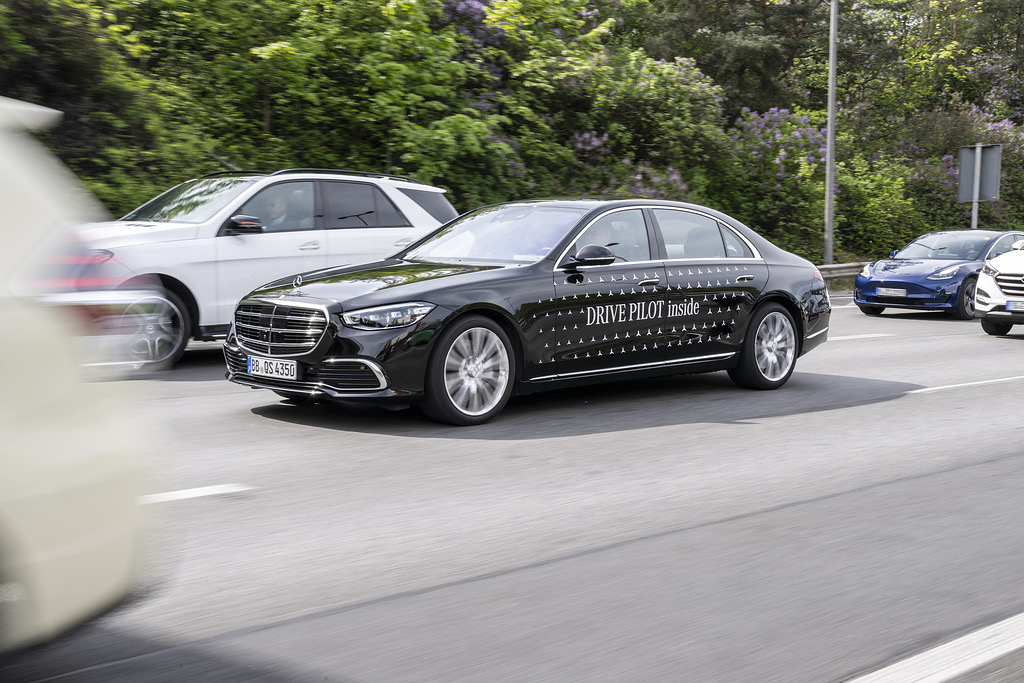
Now, drivers can watch videos and use their mobile phones while driving, and in cases of at-fault accidents like rear-end collisions, Mercedes-Benz is fully responsible.
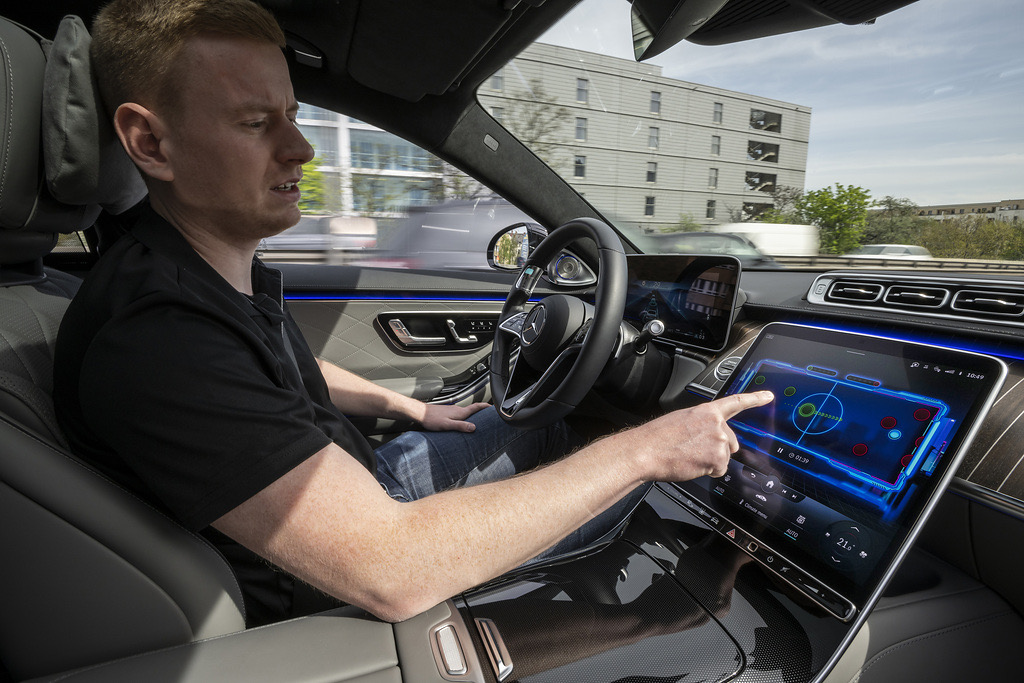
Although China’s autonomous driving regulations have not been fully implemented, Mercedes-Benz still brought the L3-capable S-Class and EQS models to the country and invested over 100,000 RMB to rent the entire intelligent networked highway test base. We will explore the differences in the Mercedes-Benz L3 from the perspectives of regulations, capabilities, and experience.
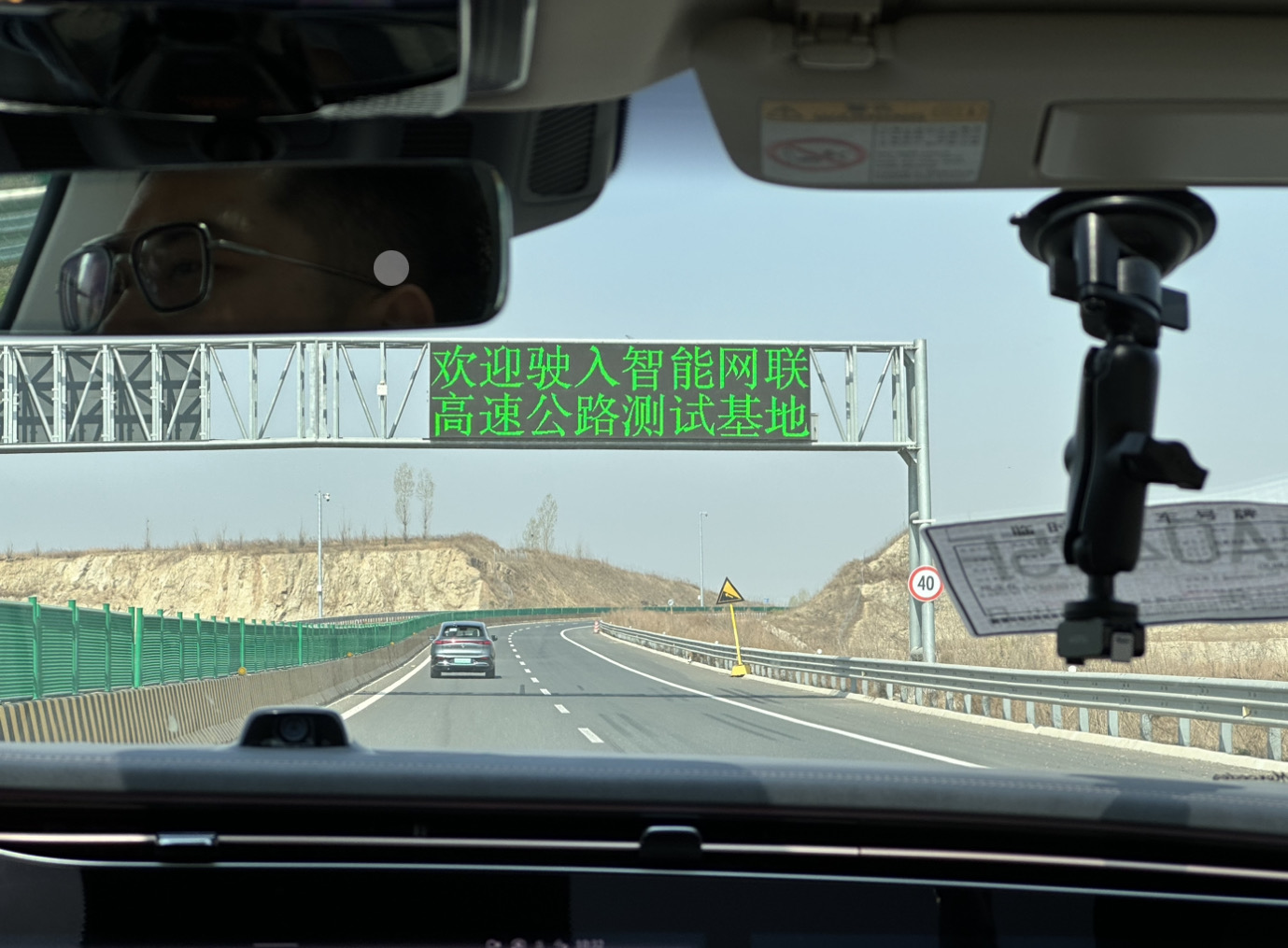
Regulatory Forefront
Currently, China’s autonomous driving regulations have not been fully established, leaving the criteria and restrictions for L3 slightly ambiguous. According to the Ministry of Industry and Information Technology (MIIT) and SAE, L3 is classified as conditional autonomous driving, with both operation and monitoring conducted by the system, and certain restrictions on its activation scenarios. At present, to comply with European regulations, the S-Class and EQS models have limited activation scenarios to 60 kph, usage within closed road sections, and no lane changes allowed.
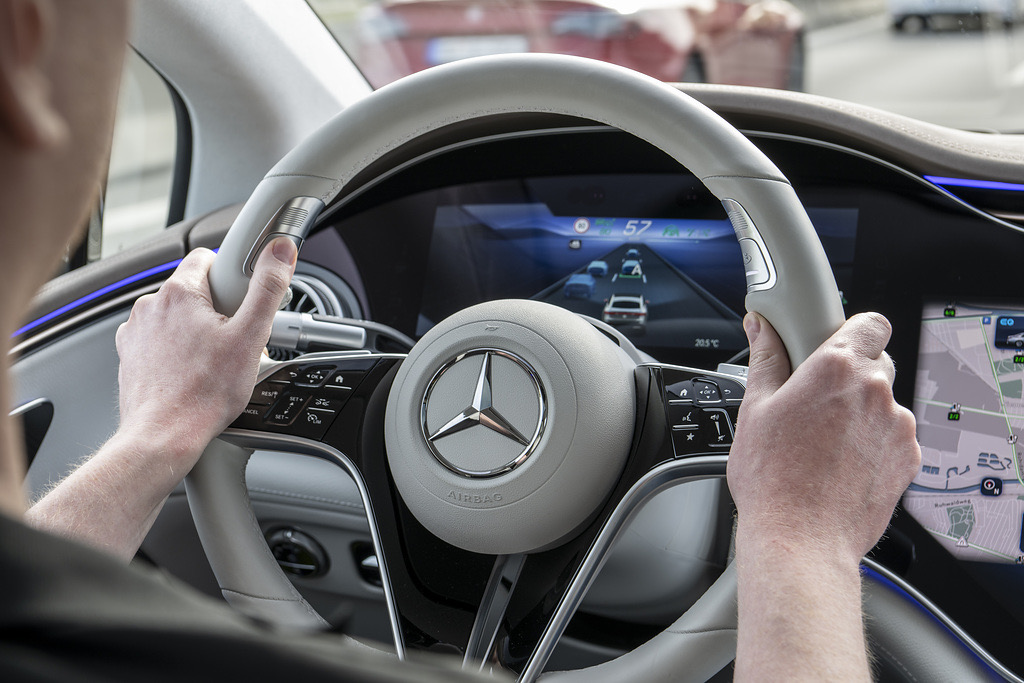
Therefore, both the S-Class and EQS models that we tested had to adhere to these two standards within the L3 category. Although the EQS’s L2-assisted driving provides a higher speed range and command-based lane change functionality, these features are temporarily unavailable in the L3 implementation due to legal and regulatory compliance.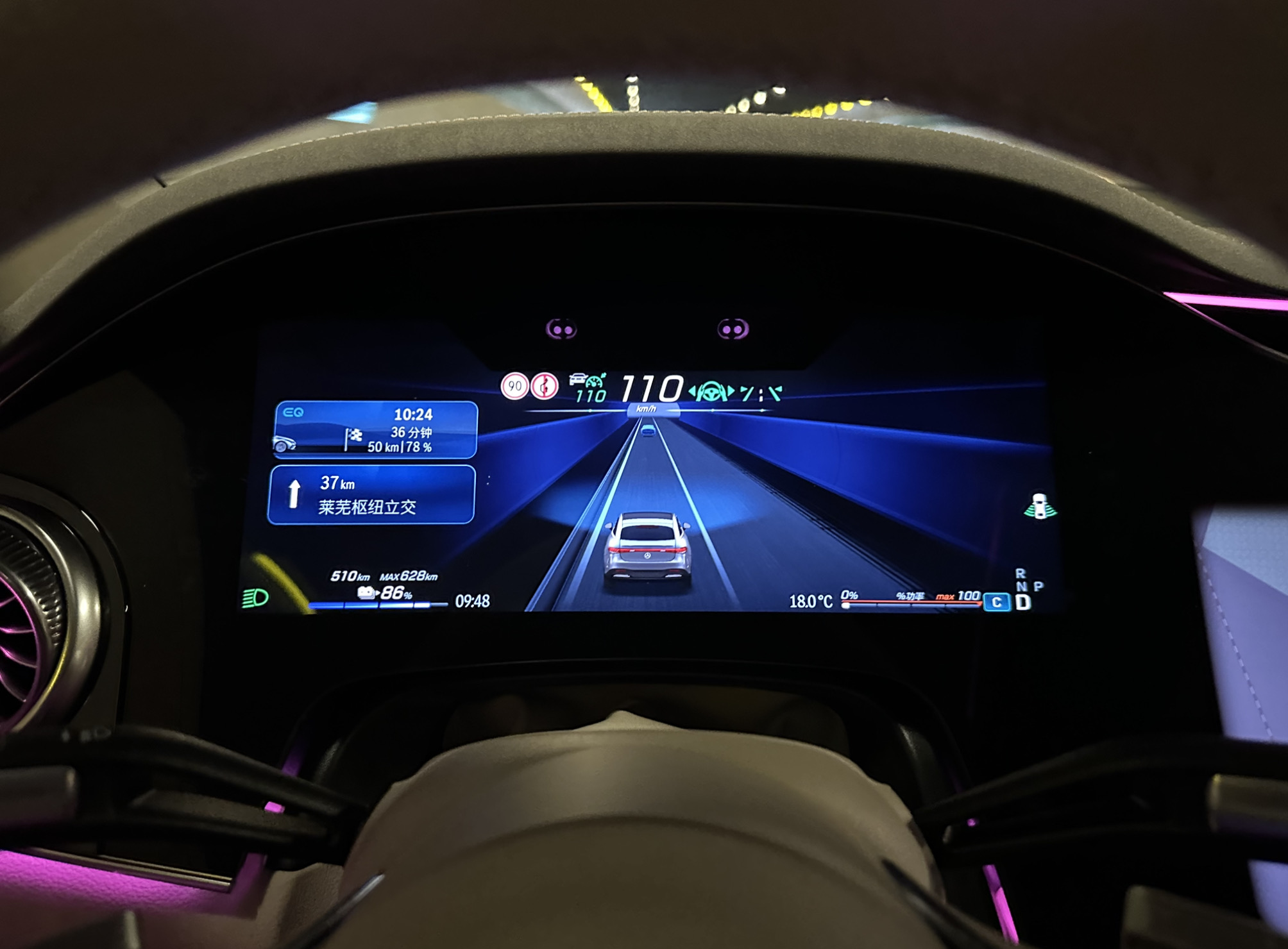
Limited by regulation requirements, Mercedes has only implemented hardware that satisfies current demands, ensuring robust forward perception without extending to all-around sensing. Both the Mercedes S-Class and EQS feature 1 pair of stereo vision cameras, 1 Valeo second-generation LiDAR, 1 forward-facing mmWave radar, 4 corner mmWave radars, 1 road surface moisture sensor, 1 rear-facing camera, 1 high-precision positioning matrix, and incorporate 360° surround-view cameras for low-speed lane keep assist.
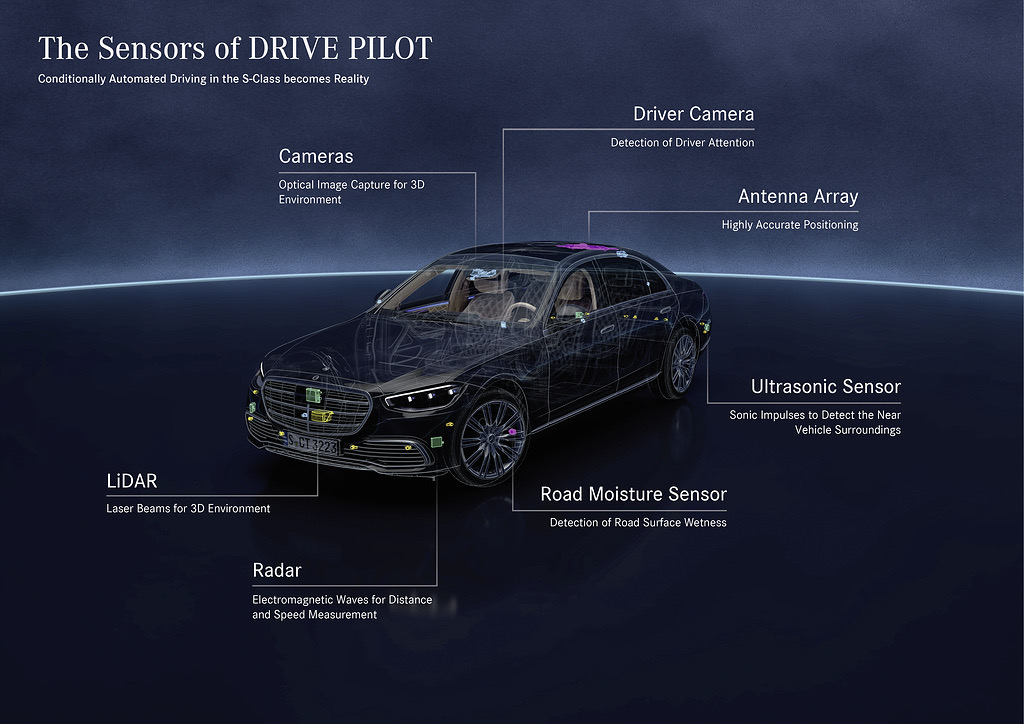
Moreover, according to SAE Level 3 requirements, conditionally autonomous vehicles must have safety redundancies at the hardware and system levels. Thus, Mercedes’ DRIVE PILOT also has redundancy settings in place for the braking system, steering system, power supply, and some sensors.

During our test, even when the stereo vision cameras and forward-facing mmWave radar failed, the vehicle could still detect and stop for a suddenly appearing triangular warning sign, relying solely on a single LiDAR unit.
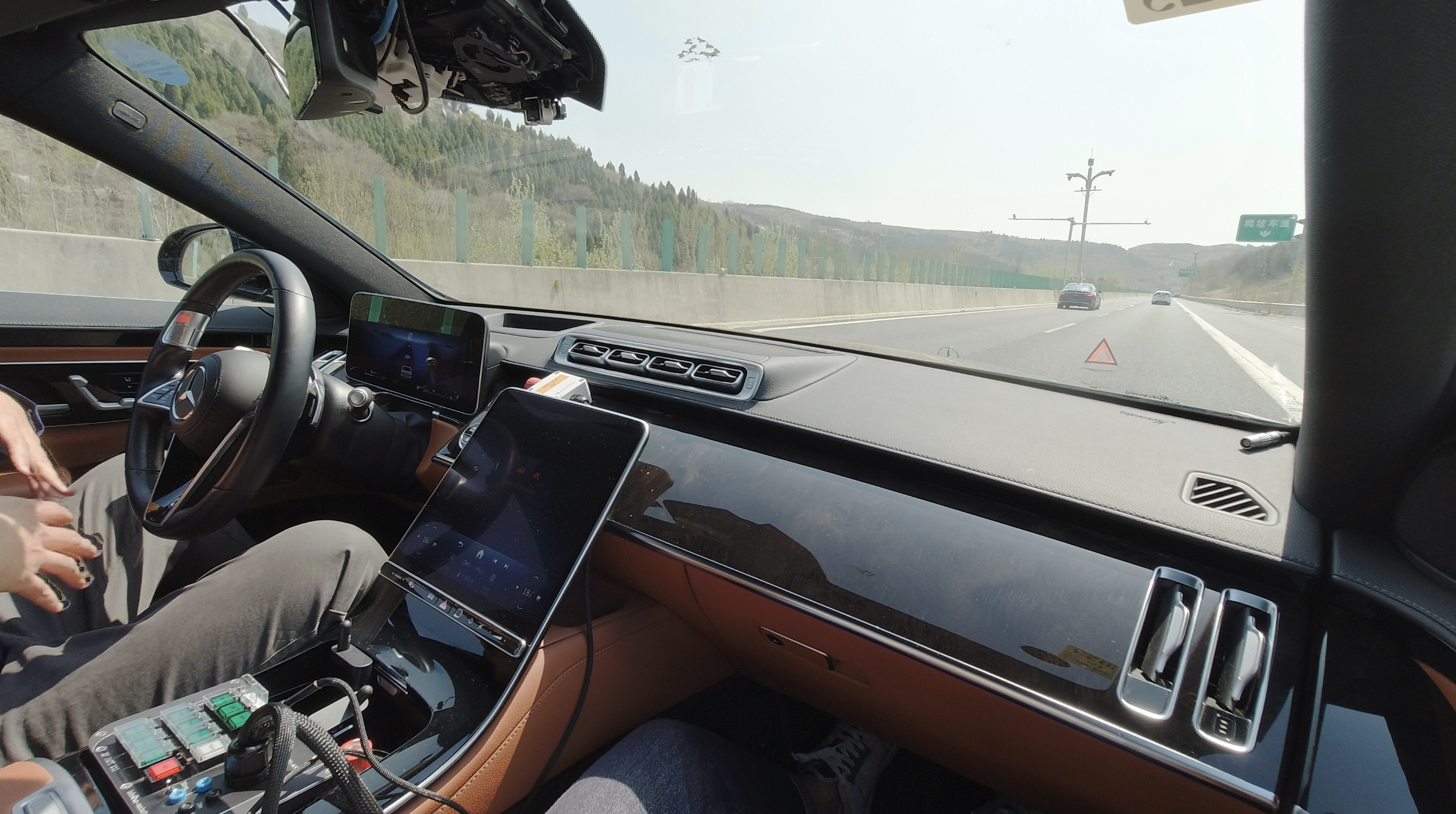
According to official information from Mercedes, this second-generation LiDAR from Valeo can identify and distinguish objects as low as 15 cm in height, including triangular warning signs and infants. This consideration for safety is based on the current hardware setup.
Can You Really Drive and Play with Your Phone?
Since the use of Mercedes DRIVE PILOT is limited to 0-60 kph, within a single lane, and allows the driver to let go and shift their attention, we put it to the test in three common special situations: following a vehicle at its limit, obstructed lanes from broken-down vehicles, and approaching emergency vehicles from behind. Let’s see how this automaker-managed Level 3 system performs.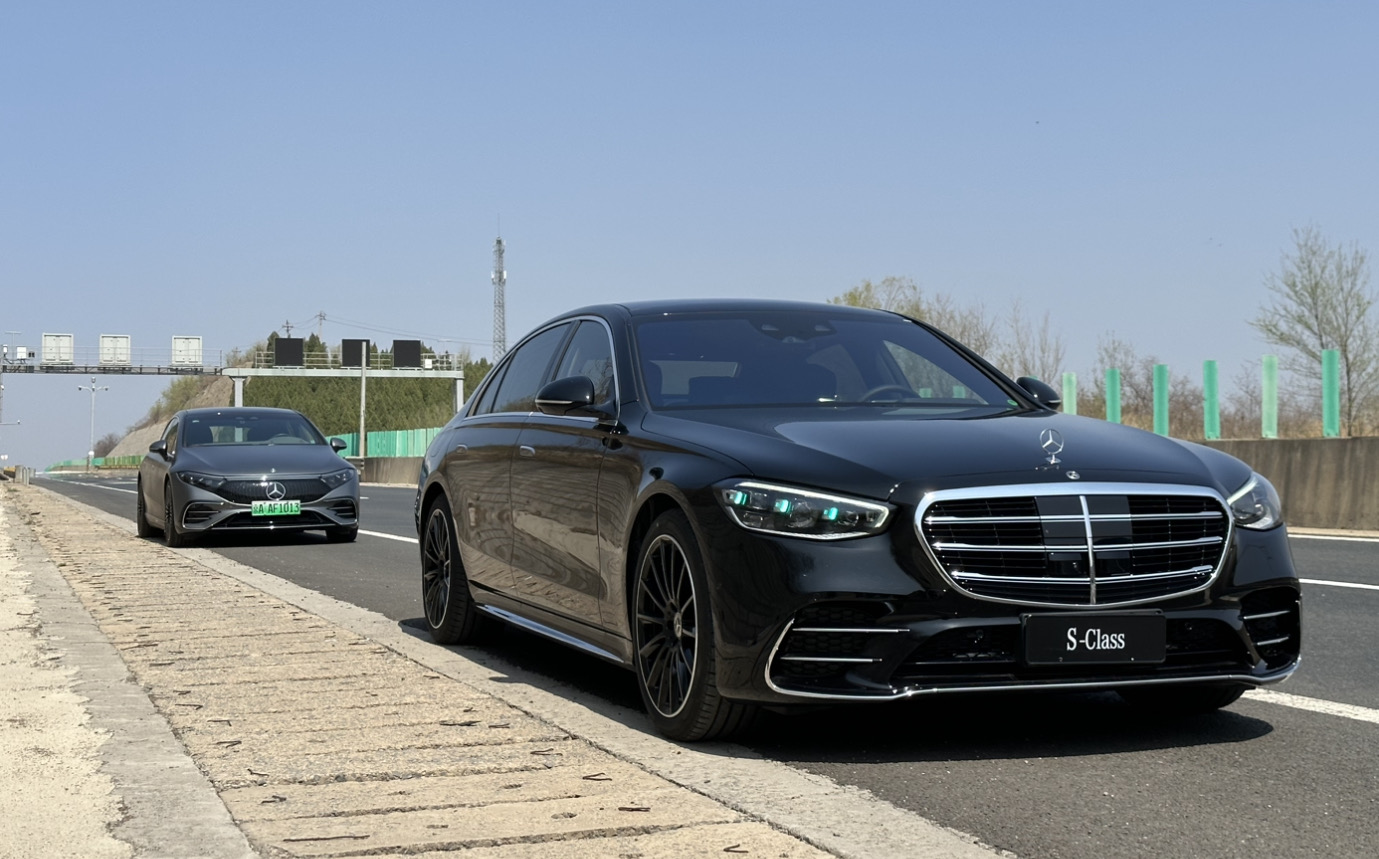
Extreme Cut-In Scenarios
Initially, Mercedes simulated a sudden “suicidal lane change” on the test track, where the leading vehicle misses an exit and abruptly merges right, as seen on elevated highways.
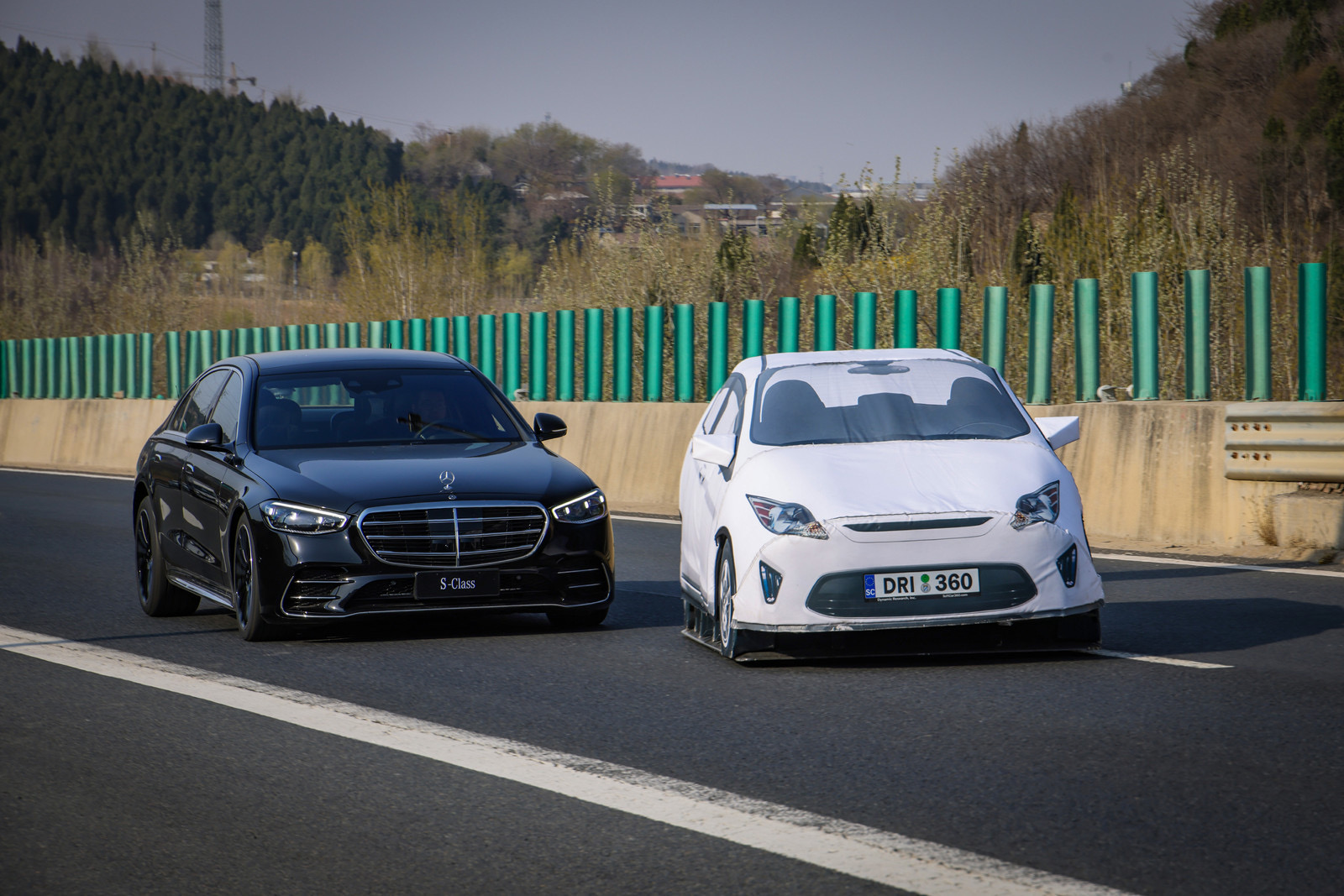
Our vehicle maintains a cruising speed of 60 km/h, and upon detecting a significantly slower vehicle in the fast lane, automatically reduces its speed by about 10%. This experienced approach is logical – if I encounter such a hazardous vehicle on a high-speed highway, I would also slow down in anticipation of unexpected events.
As our vehicle closes in on the slower one, the latter suddenly darts into our path, with the Mercedes DRIVE PILOT promptly applying the brakes to avert a collision.
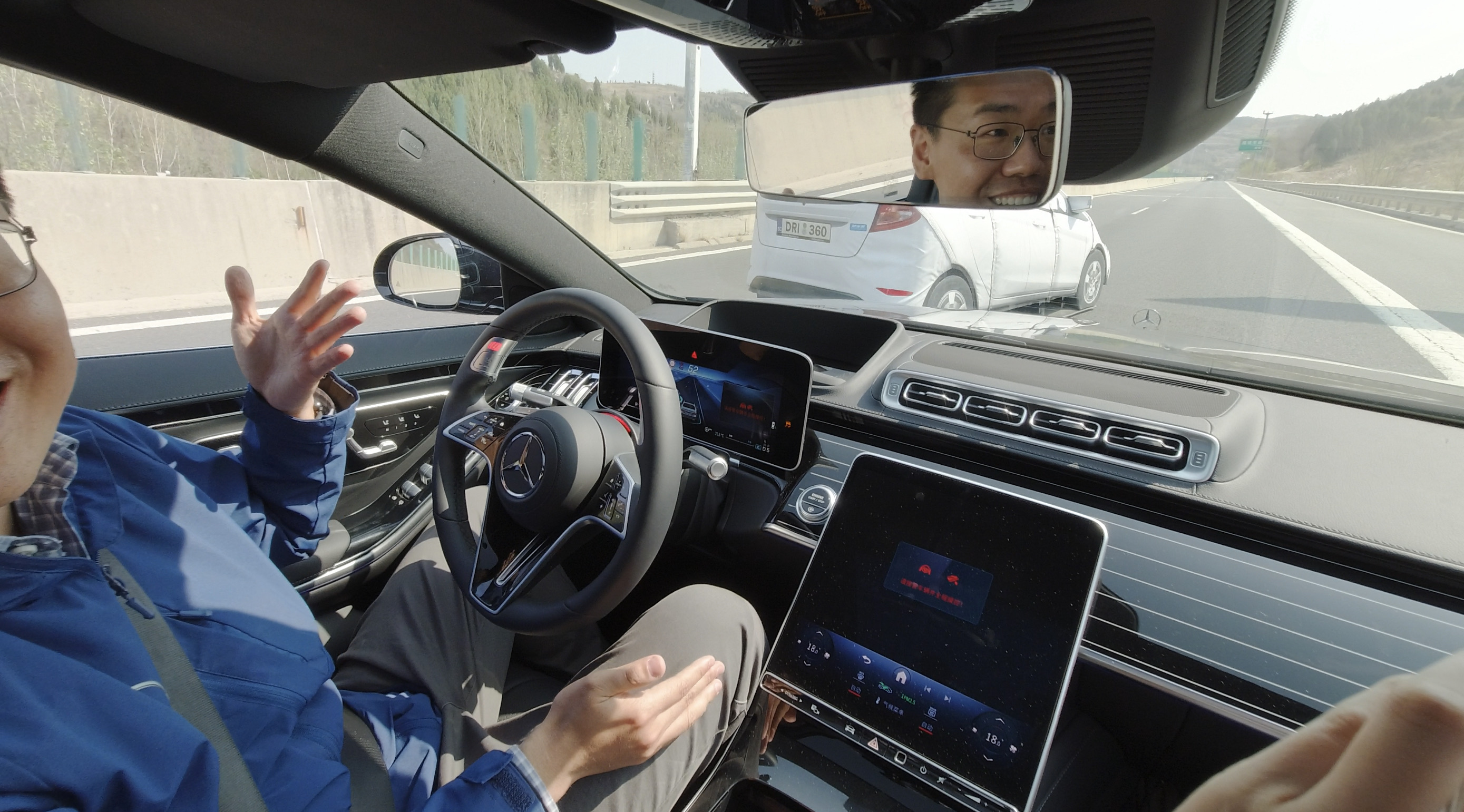
This capability is commendable, and most astonishingly, the driver’s attention is entirely off the road, gazing backward when a collision is imminent. It’s only upon identifying and braking for the leading vehicle to secure a safe state that the system disengages L3 and allows the driver to resume control. This is precisely the intended state of Level 3 conditional autonomy.
Emergency Vehicle Evasion
The second scenario involves giving way to an approaching emergency vehicle from the rear, as required by law. The Mercedes DRIVE PILOT relies on a rear windshield-mounted camera and in-cabin microphone to detect the presence of emergency vehicles.
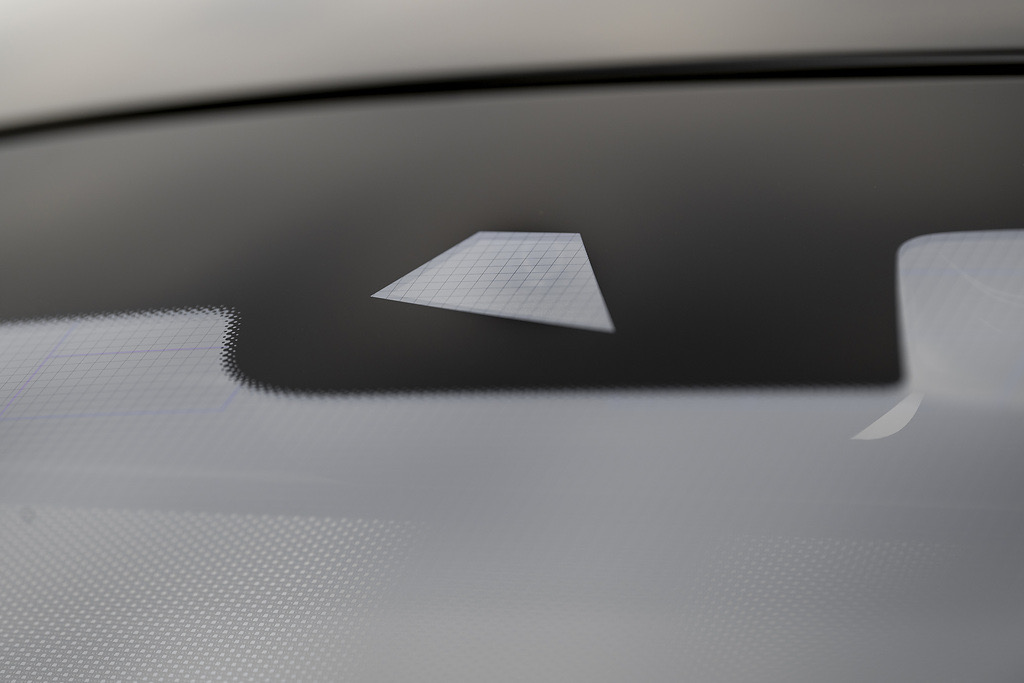
Upon satisfying either condition, the DRIVE PILOT issues a takeover request, prompting the driver to assume control within 10 seconds. Although the rear window camera appears designed for distance assessment and vehicle recognition, engineers have disclosed that it exclusively detects emergency vehicles and lacks further sensing integration or decision-making capability.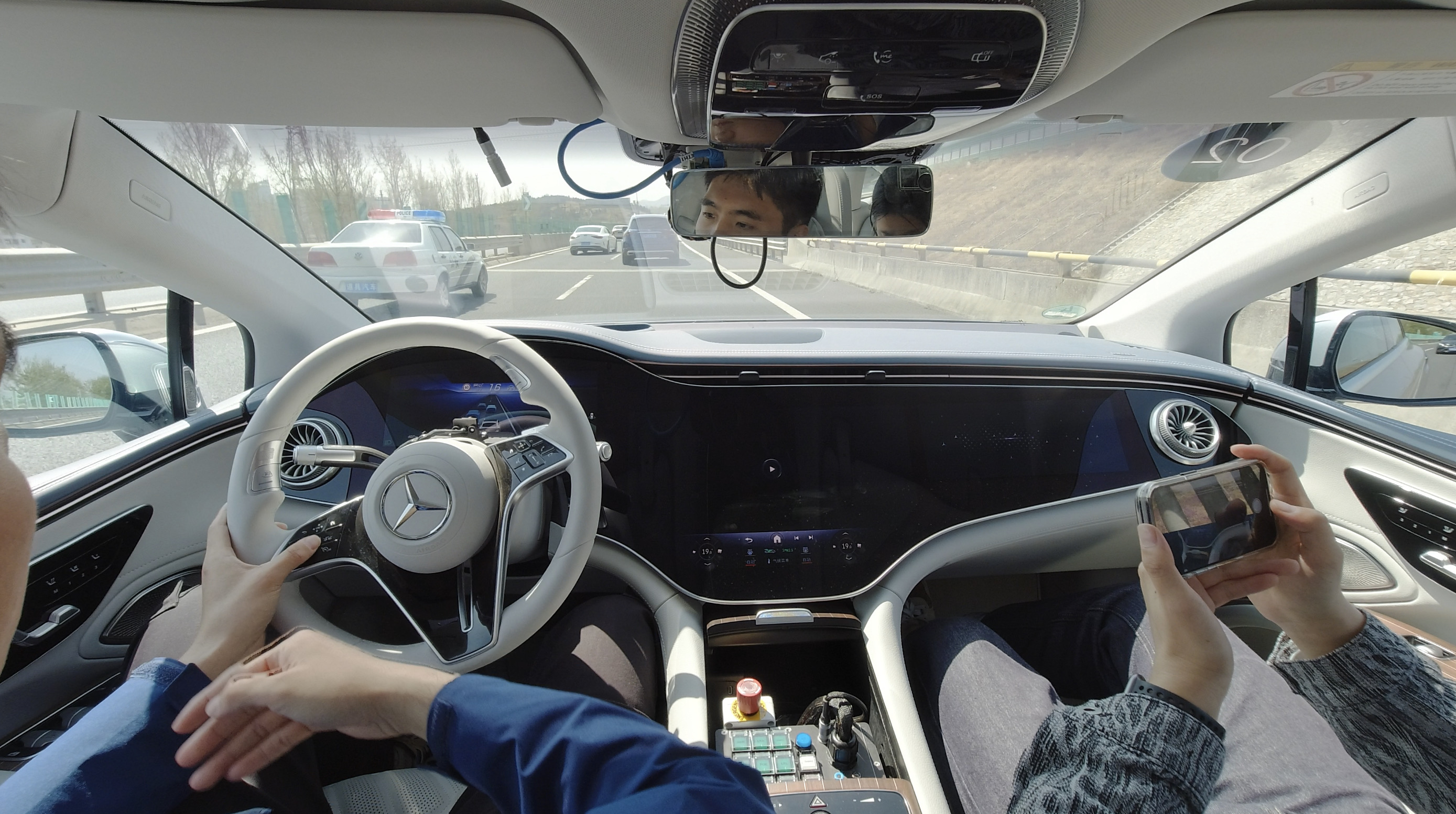
Thus, even when executing a lane change command in L2 mode, it still relies solely on the side rearward millimeter-wave radar to determine the distance of vehicles behind the target lane, with this camera playing no role in the judgment. No wonder this camera has only a 50-degree field of view. We also look forward to whether Mercedes-Benz will enhance the sensing function of this camera and incorporate it into the L2 mode’s integrated sensing in the future.
Lane-Overtaking
The last scenario simulated by Mercedes-Benz was a situation where a disabled vehicle occupied a part of the current lane. The disabled vehicle encroached 15% of the lane. If it were an ordinary assisted driving system, the vehicle would keep moving straight, although it wouldn’t collide, the degree of danger on the right side would increase significantly.
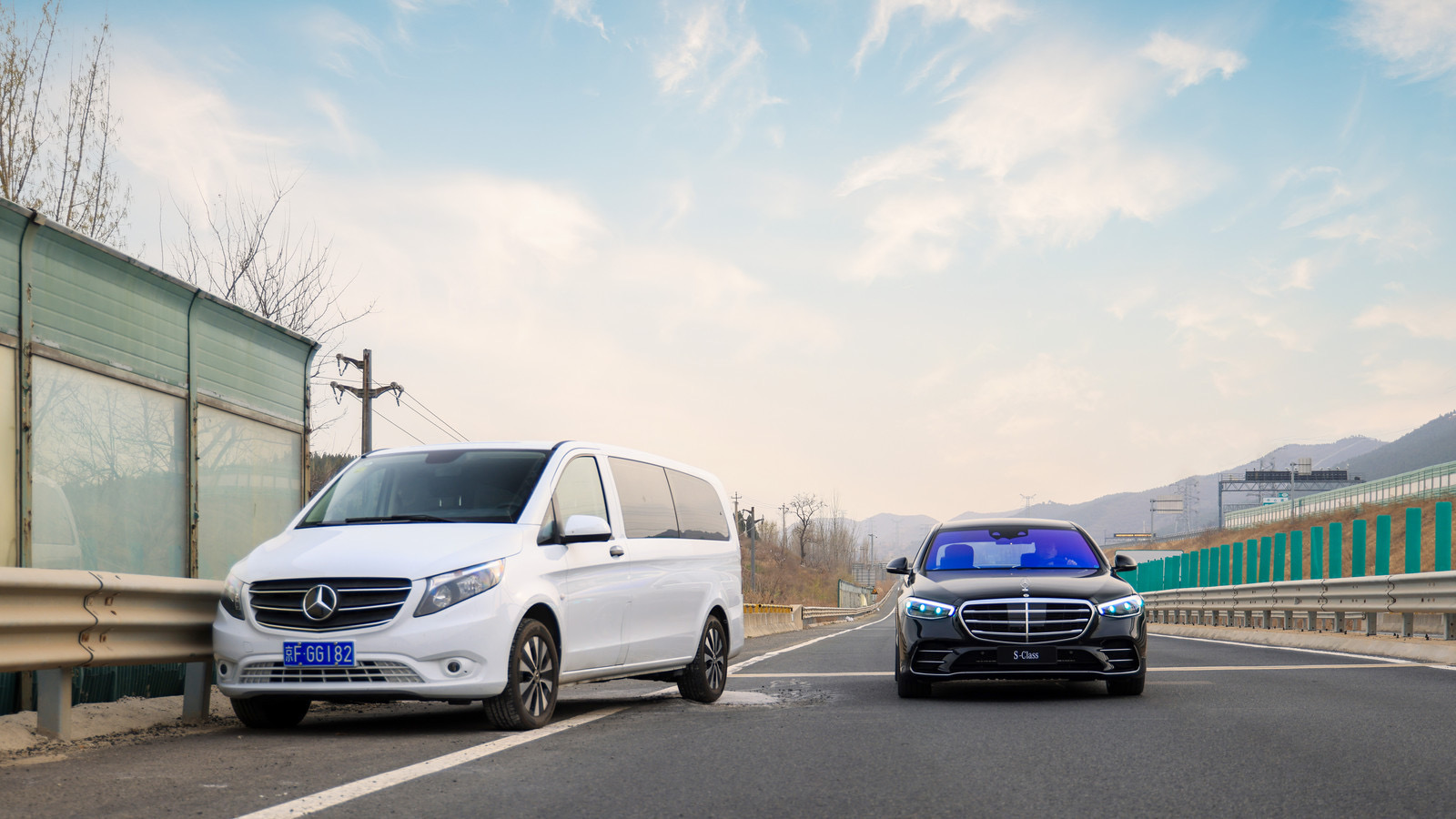
The approach of Mercedes-Benz DRIVE PILOT is to slightly reduce speed and drive around the disabled vehicle, while the driver can still shift their attention to the in-car screen to watch videos without worrying about any danger. In fact, the actual sensation of the vehicle’s deceleration, braking, and direction change while moving around is quite linear and natural, causing no panic or concern for the driver or passengers.
Relying on DMS for Watching Videos in Traffic Jam
To achieve L3, in addition to the capabilities of the vehicle being crucial, the monitoring of the driver’s state also needs to be highly accurate. Therefore, Mercedes-Benz DRIVE PILOT is also equipped with a DMS featuring eye tracking, which is quite in line with Cadillac’s Super Cruise.

Mercedes-Benz allows drivers to look at the vehicle screen or their phone after L3 is activated, but it does not allow for dozing or microsleep. This system will judge whether the driver’s current state can allow L3 to continue working based on their eye movements. This DMS can accurately recognize any type of gaze shift, but once it detects your eyes closing, it will quickly prompt for a takeover.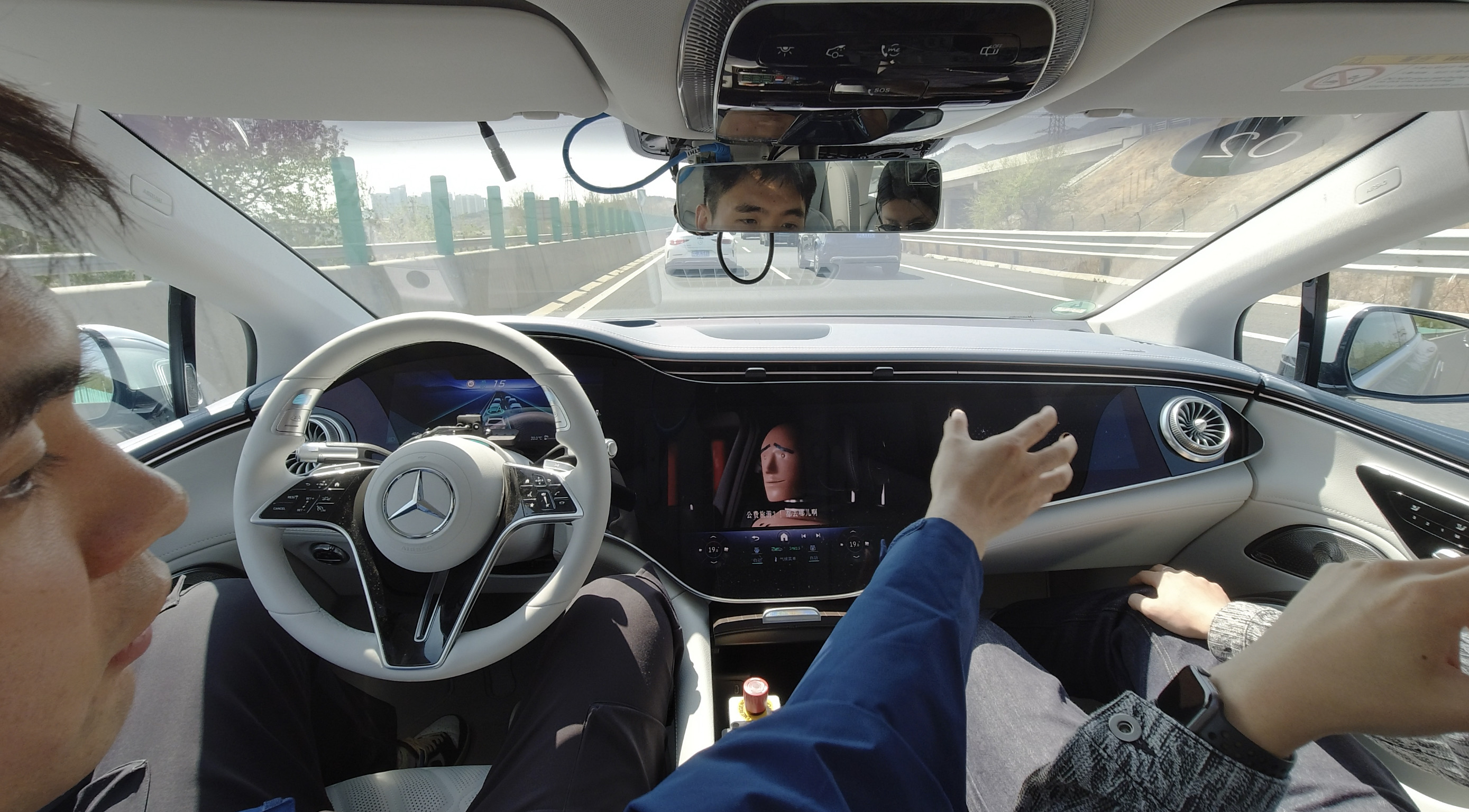
The DMS also functions during L2 driving. The Mercedes-Benz EQS’s HyperScreen features a co-driver’s display capable of playing entertainment media. When the driver watches a video on the co-driver’s display, the DMS recognizes the eye position and temporarily pauses the video. At the same time, the DMS can distinguish whether the driver is looking at the right wing mirror or the co-driver’s display. This level of precision serves as the last line of defense for driving safety in Mercedes-Benz L3.
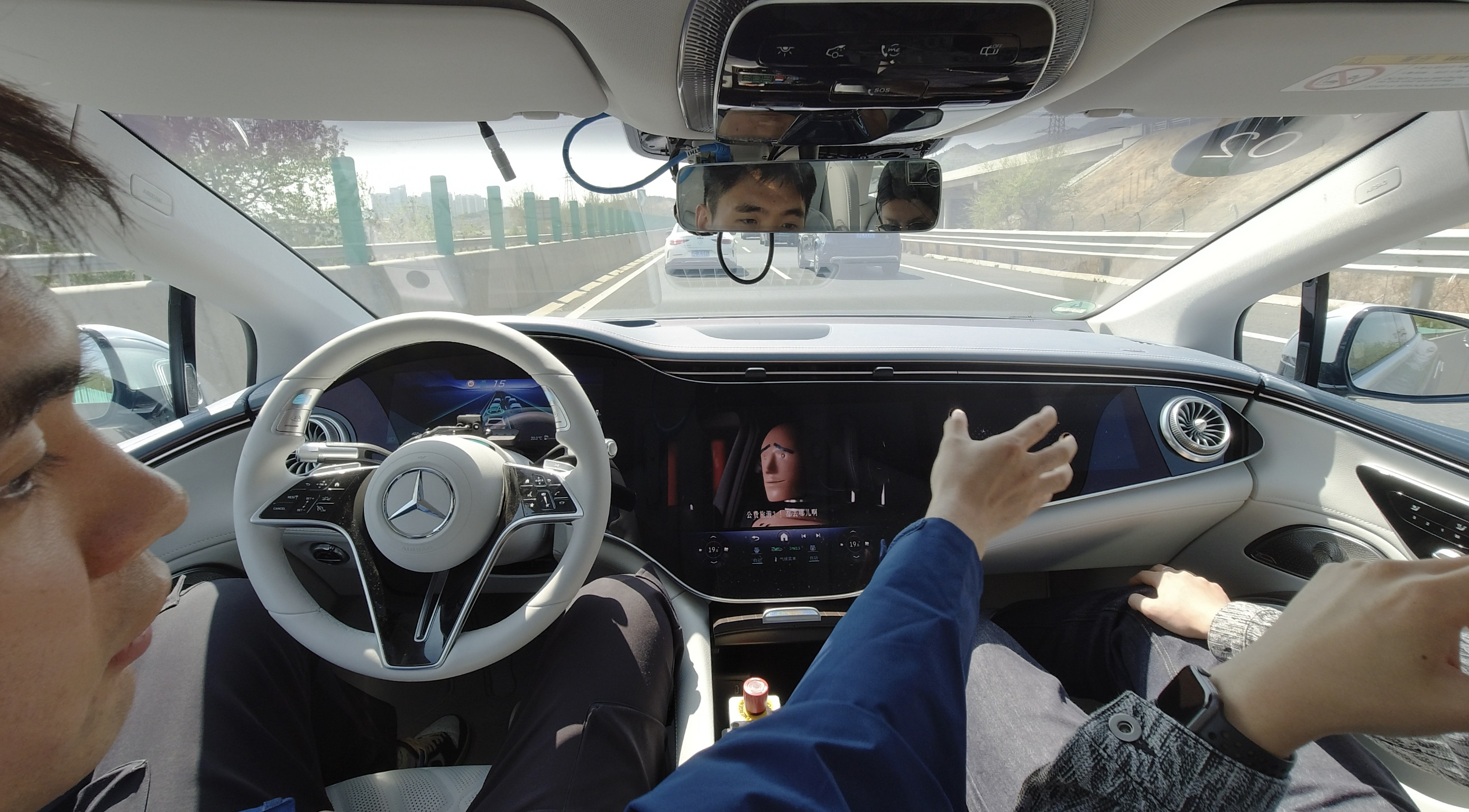
Interaction
For an effective driving assistance system to gain the driver’s trust, it is essential not only to meet performance standards but also to provide seamless interaction and visualization.

When DRIVE PILOT is activated, the vehicle’s dashboard displays visual information for 3 lanes. Upon detecting a vehicle ahead, the dashboard displays an “A” symbol on that vehicle. Simultaneously, the DRIVE PILOT buttons on both sides of the steering wheel turn blue, as do the external headlights, indicating to surrounding vehicles and pedestrians that the car is in autonomous driving mode.
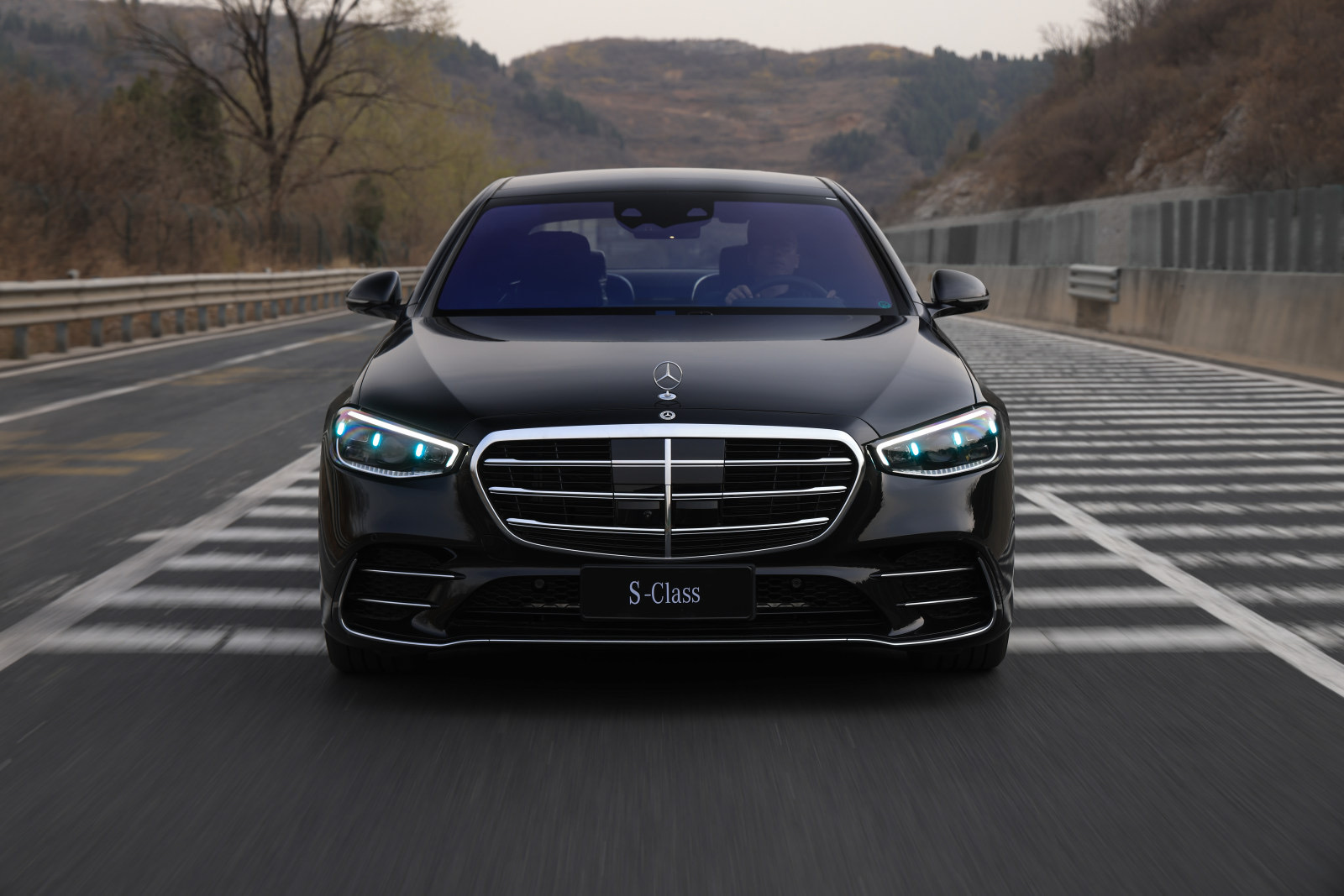
Activating DRIVE PILOT is simple: when lane markings are clear, the car is positioned within wheel arches, road surface moisture sensors determine the ground is not slippery, high-precision maps are permitted, and the driver’s condition is satisfactory, simply press a button to enable.
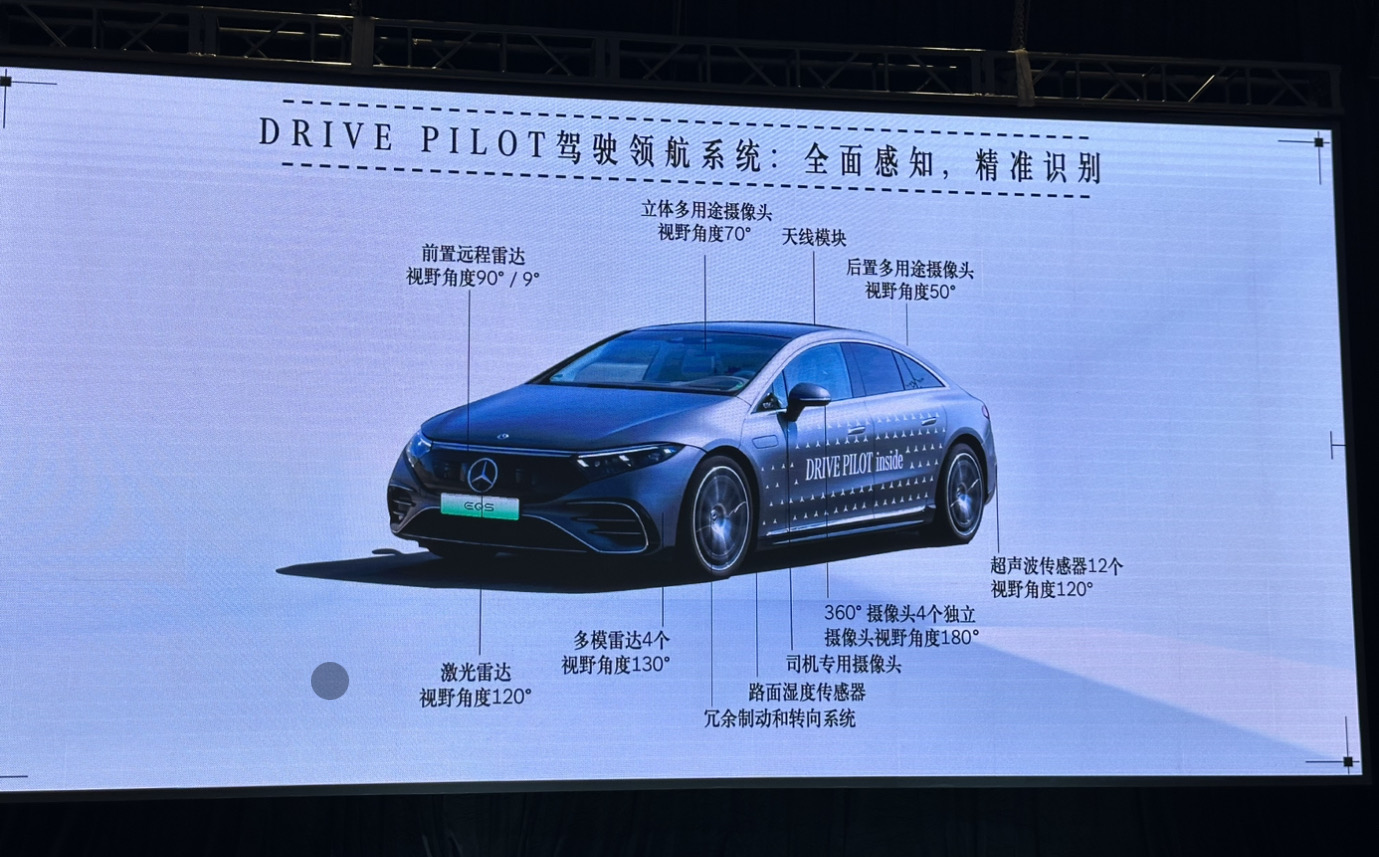
If any of these conditions are not met, the DRIVE PILOT button on the steering wheel turns yellow, signaling the need for intervention. After 10 seconds, it turns red, indicating immediate takeover. This 10-second buffer has legal implications; if an accident occurs during this period, Mercedes-Benz is held responsible. But if the takeover occurs after the 10 seconds and an accident happens, the driver assumes responsibility.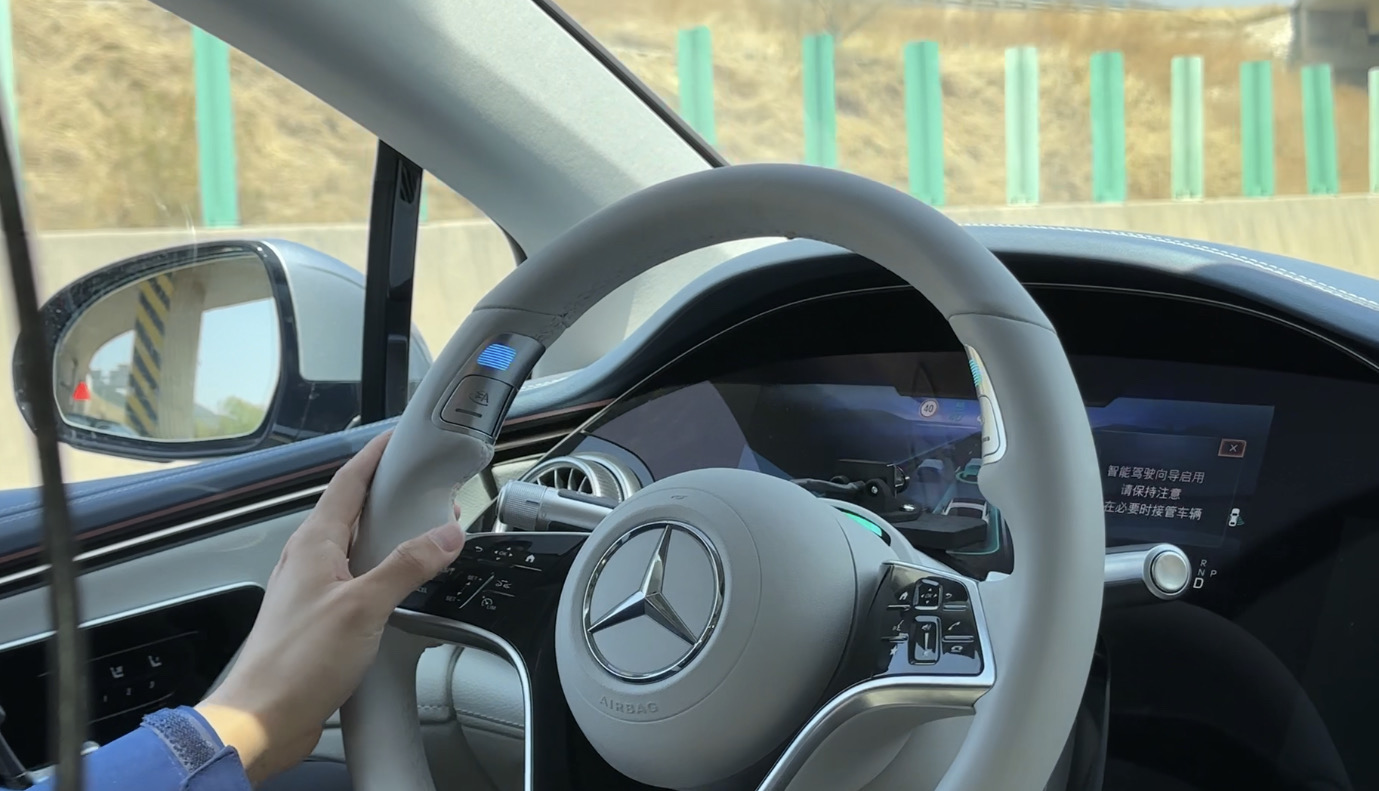
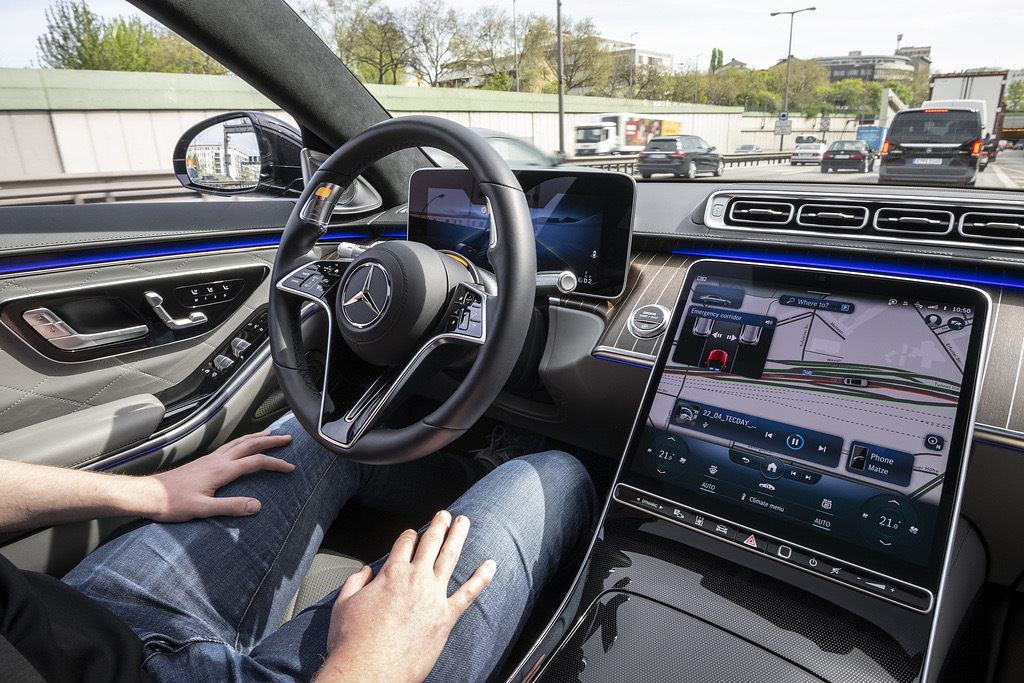
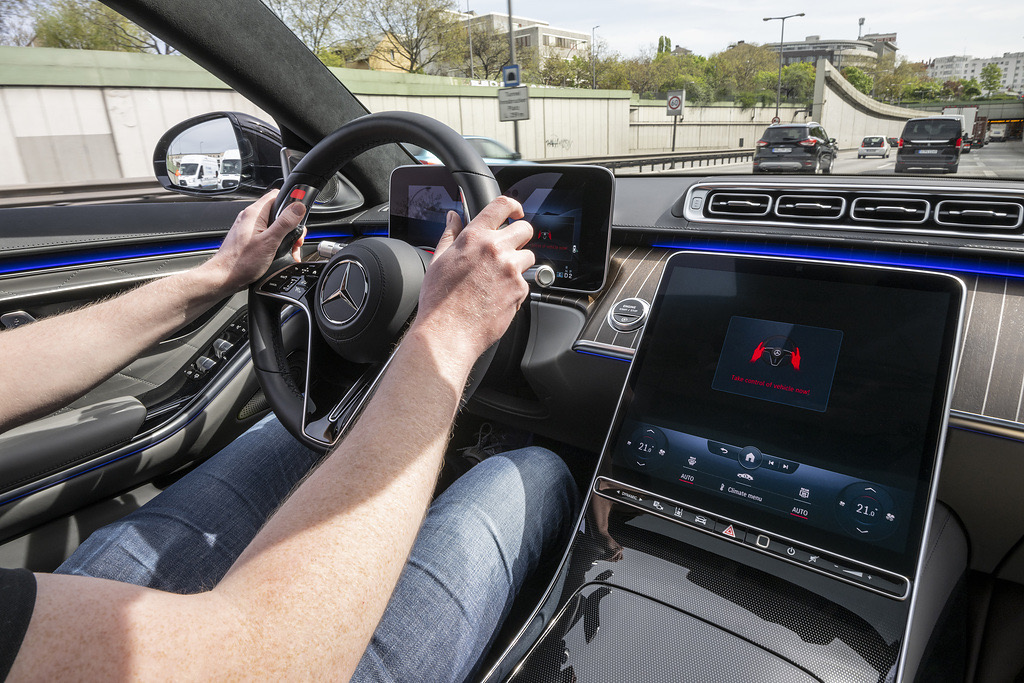
If the driver does not take over the vehicle within the maximum 10 seconds, DRIVE PILOT will initiate an emergency stop and call the domestic Mercedes-Benz SOS hotline through MB.OS to confirm the driver’s safety, ensuring the security of the vehicle, occupants, and surrounding traffic. Furthermore, L3 DRIVE PILOT will be disabled for the remainder of the trip, only resuming during the next ignition cycle.
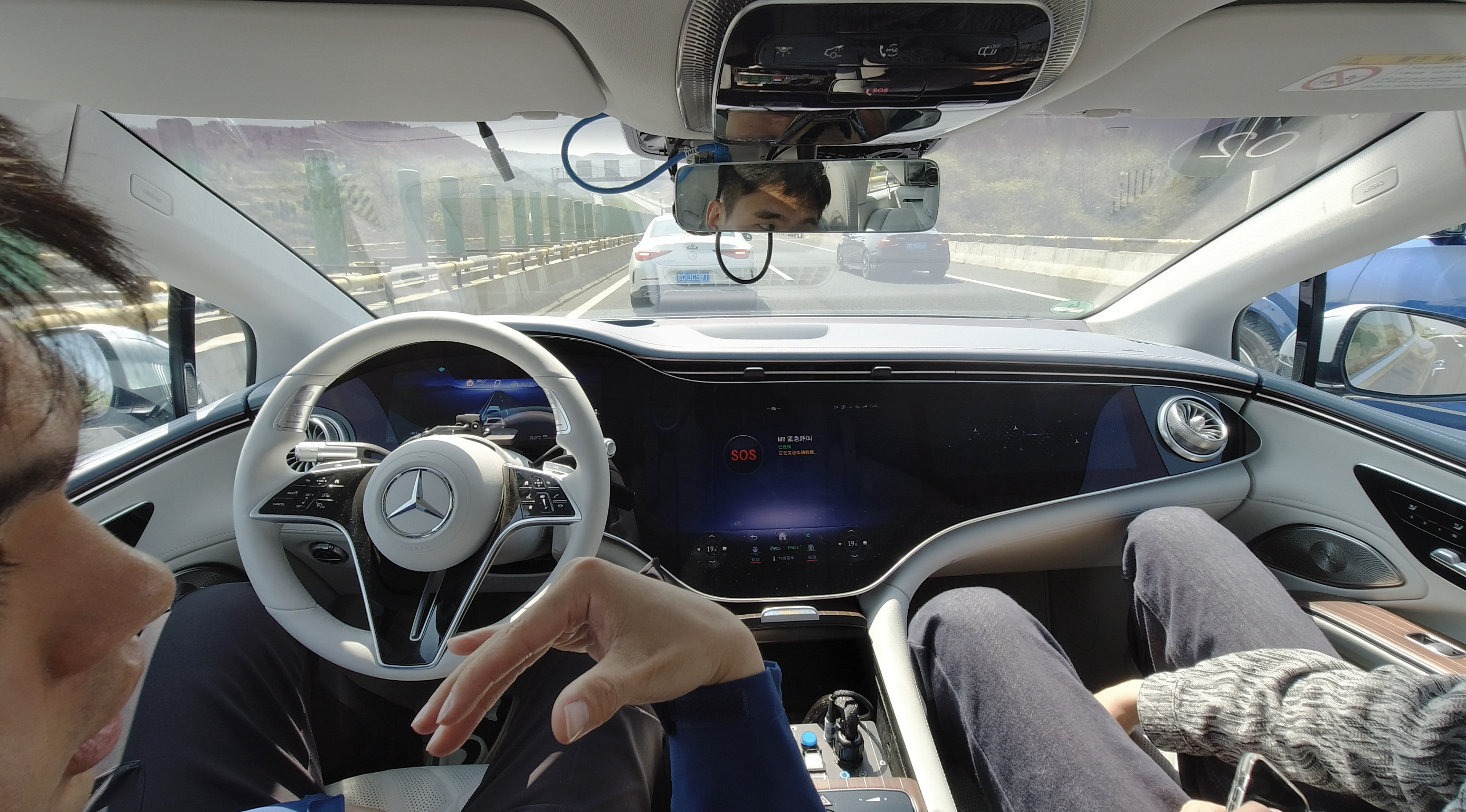
In Conclusion
With the introduction of DRIVE PILOT test drives in China, Mercedes-Benz signals to Chinese consumers that their L3-level assisted driving system has the potential to be available domestically once regulations are clarified.
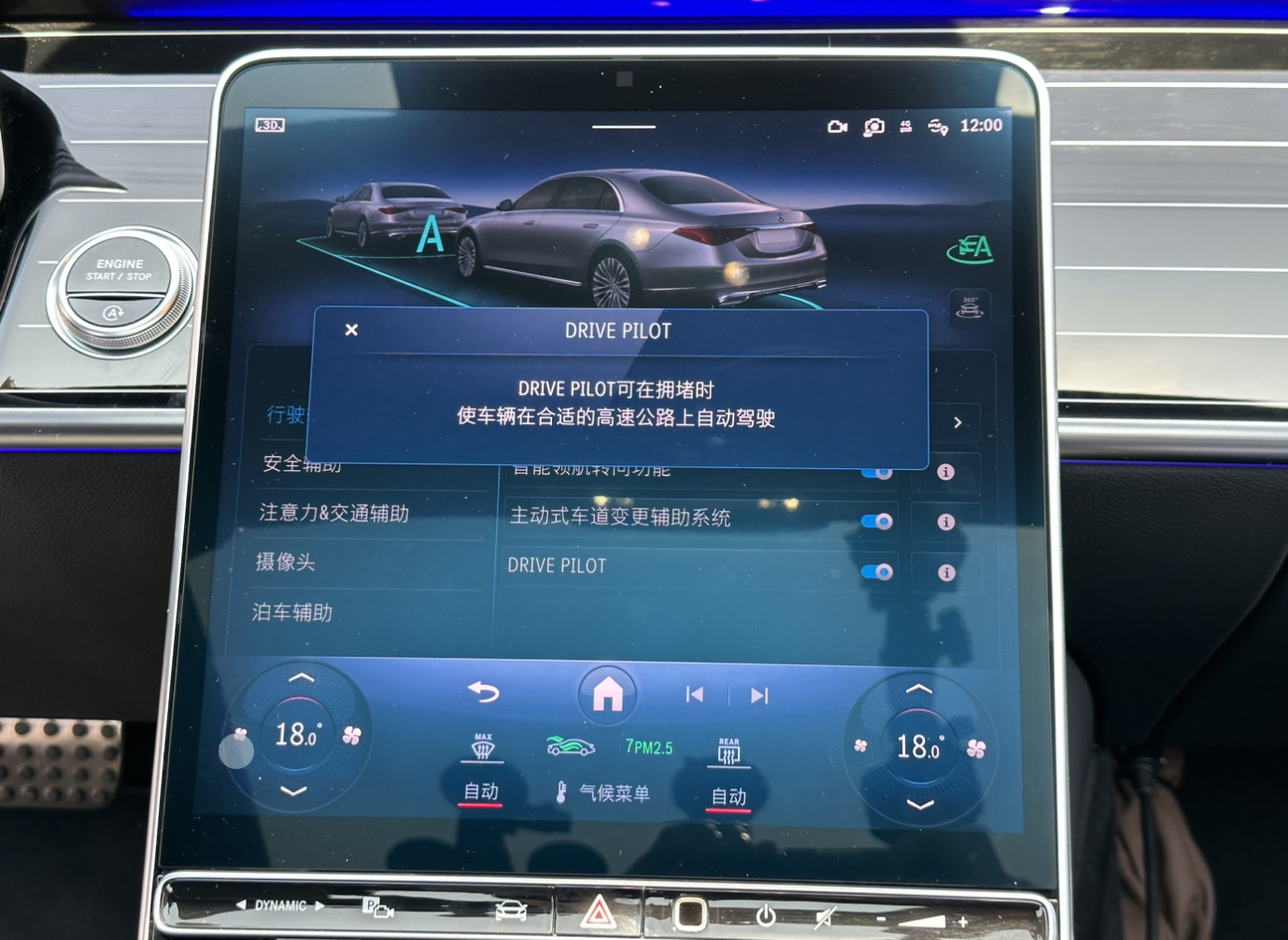
The L3 system has a dedicated localization team in China. To date, there are 268 L3 test vehicles globally, with a total of 9.5 million kilometers traveled and 4.79 million test events completed. Although the L3-compliant speed is limited to 60 kph or 40 mph (64.4 kph) abroad to meet foreign regulations, the Mercedes-Benz DRIVE PILOT has reached a maximum setting of 90 kph during domestic road tests in China. If future regulations further increase the speed limit, 90 kph will provide even greater practicality for Chinese users.
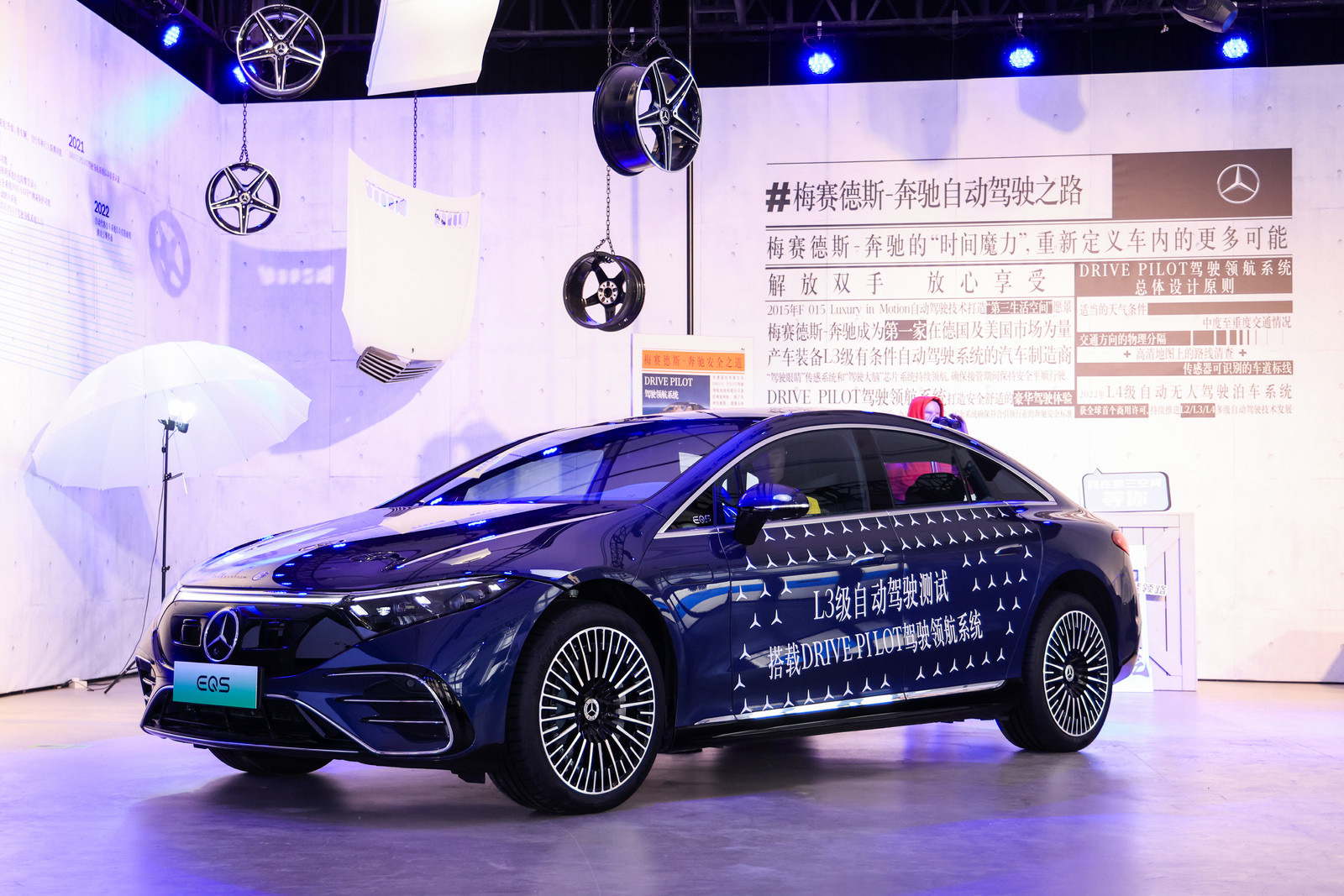 According to Mercedes-Benz, the next phase of L3 Autonomous Driving will further increase its speed, doubling from the current 65 kph to 130 kph. The acceleration tests are in their final stages, making this L3 system practically applicable on any expressway in the country.
According to Mercedes-Benz, the next phase of L3 Autonomous Driving will further increase its speed, doubling from the current 65 kph to 130 kph. The acceleration tests are in their final stages, making this L3 system practically applicable on any expressway in the country.
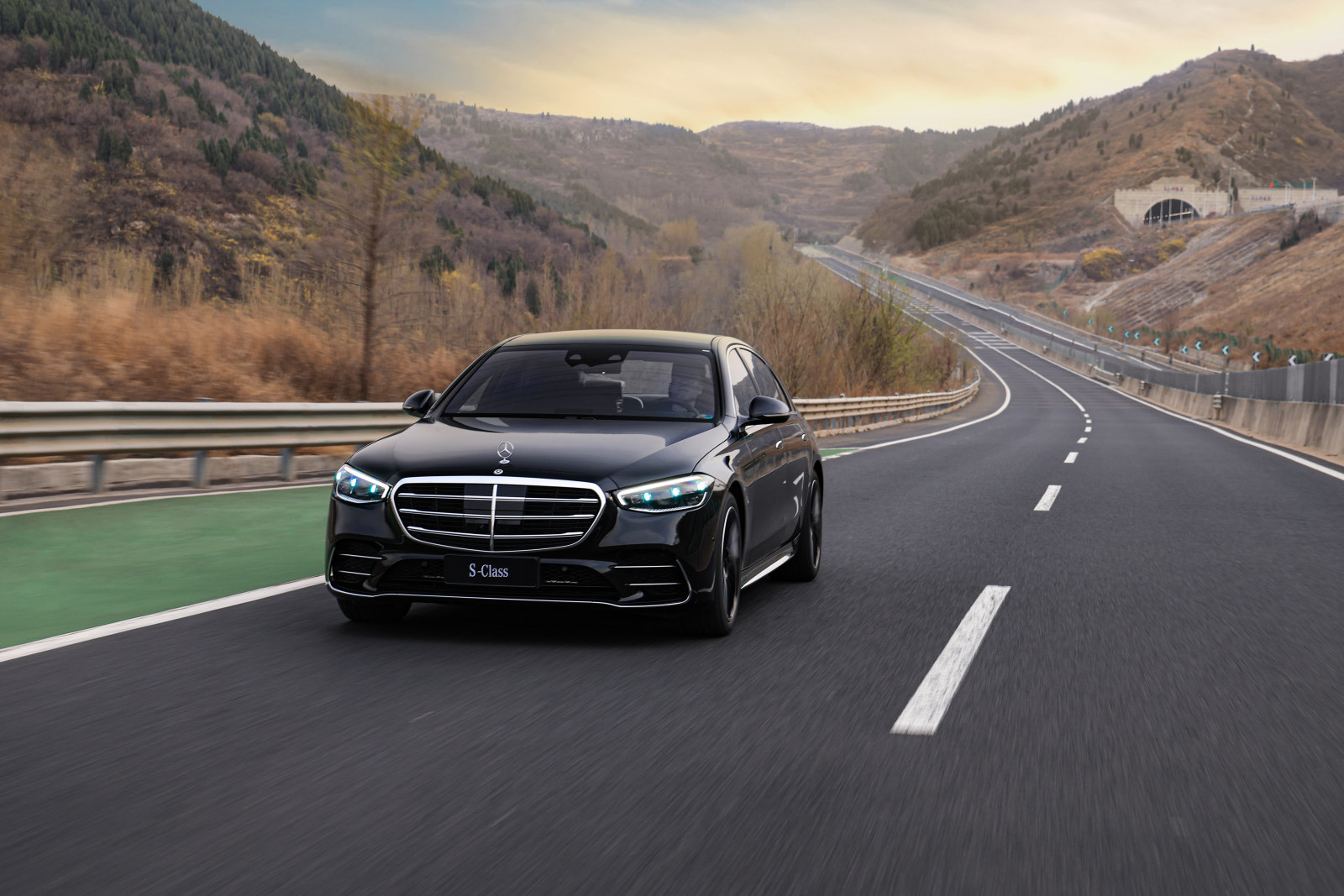
The optional price for Mercedes DRIVE PILOT in Germany is not particularly expensive, with the S-Class priced at 5,000 Euros (approximately 3.72 million RMB) and the EQS at 7,430 Euros (approximately 5.53 million RMB). The higher price for the EQS is due to the bundled sale of the 2,430 Euro Driver Assistance Package Plus. Compared to the million-level prices of both vehicles and similar offerings from BMW, Audi, and Tesla, Mercedes’ option prices are not considered expensive.
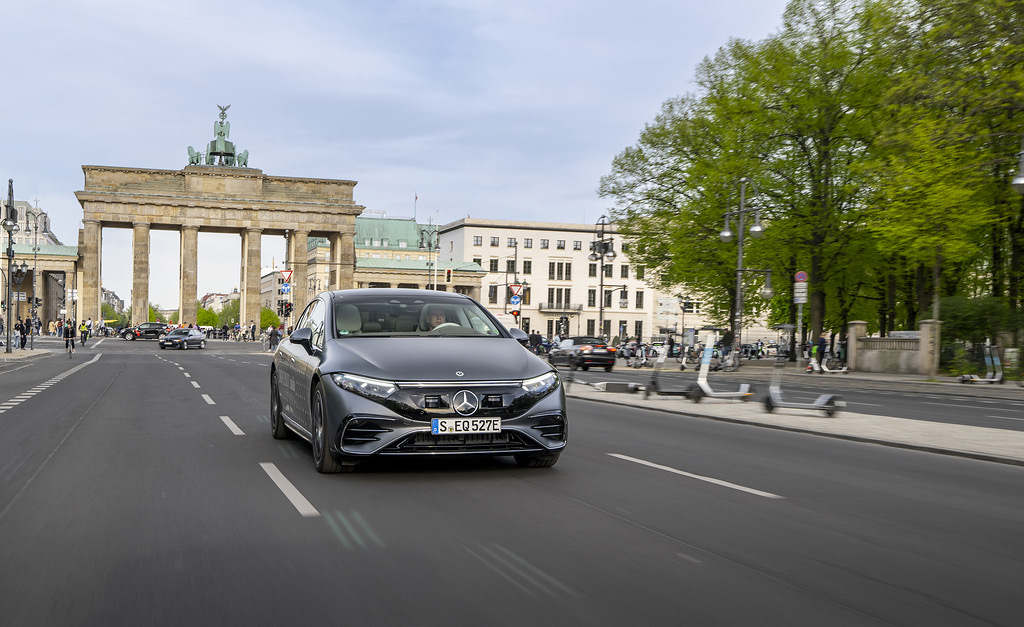
On the current foundation, Mercedes is already developing its next-generation L3 autonomous vehicles, with features that include not only L2 assisted driving on closed roads but also urban navigation assisted driving. In addition to increased speed, L3 will involve deep hardware collaborations with NVIDIA and Luminar, while the MB.OS China map style will be built using the Unity engine, creating a richer, more three-dimensional navigation display.
We also look forward to the moment when the laws and regulations for autonomous driving are fully mature and introduced, so that Mercedes can step forward to ensure safety and responsibility, providing drivers with a relaxing and secure driving experience.
This article is a translation by ChatGPT of a Chinese report from 42HOW. If you have any questions about it, please email bd@42how.com.
